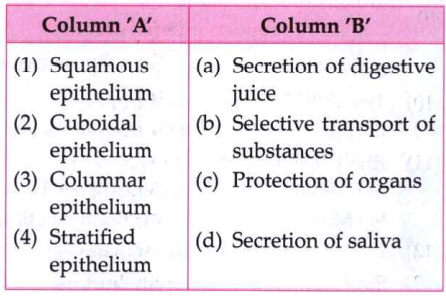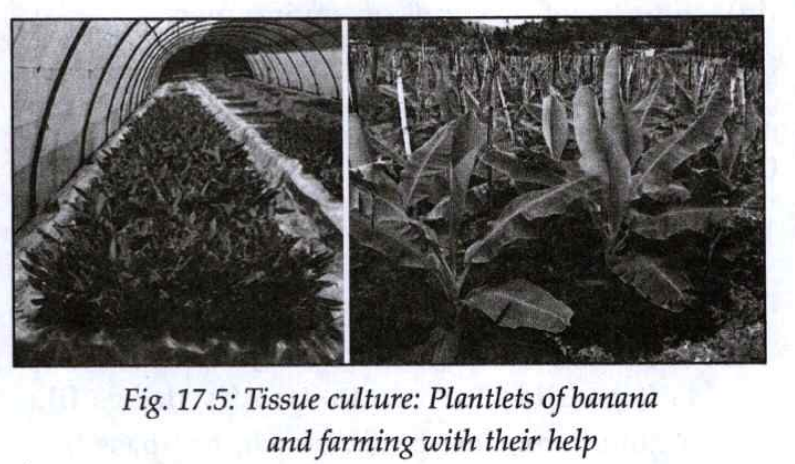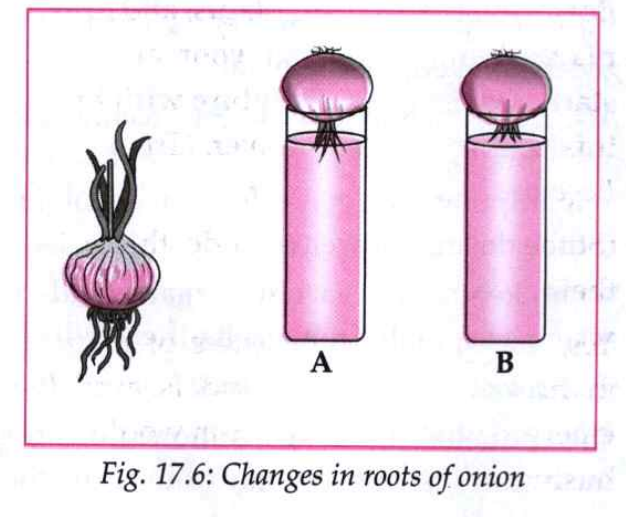Complete Solutions to EXAMPLE of chapter INTRODUCTION TO BIOTECHNOLOGY of Class 9 book with complete answers and questions
| Class 9 | BIOLOGY |
| Chapter | INTRODUCTION TO BIOTECHNOLOGY |
| CHETANA PUBLICATION | EXAMPLE |
| Number Of Questions | 100 |
| Academic Year | 2023-24 |
Which component brings about important processes in the living organisms?
View SolutionWhich is the smallest structural and functional unit of the body of living organisms?
View SolutionWhich type of muscle is the diaphragm of the respiratory system?
View SolutionIs there any difference between plant growth and animal growth?
View SolutionWhy does the growth of a plant occur only at specific parts of the plant body?
View SolutionFind odd man out
Epithelium, muscle fibre, nerve fibre, epidermis.
View SolutionFind the odd man out
Cell body, muscle fiber, axon, dendrites.
View SolutionFind the odd man out
Tracheids, vessels, companion cells, xylem fibres.
View SolutionFind the odd man out
Bone, cartilage, tendon, cardiac muscle.
View SolutionFind the odd man out
Sieve tubes, tracheids, phloem parenchyma, phloem fibres.
View SolutionFind the odd man out
Holstein, Brown swiss, Bombyx mori, jersey.
View SolutionFind the odd man out
Xylem, phloem, permanent tissue, meristematic tissue.
View SolutionMatch the columns :

View SolutionMatch the columns :

View SolutionMatch the columns :

View SolutionName the following:
Tissue lining inner surface of the mouth.
View SolutionName the following
Tissue joining muscles and bones.
View SolutionName the following
Tissue responsible for increasing the height of plants.
View SolutionName the following
Tissue responsible for increaseing the girth of stem.
View SolutionName the following:
Tissue responsible for growth of branches, formation of leaves and flowers.
View SolutionName the following:
Tissue that helps in insulation, supply of energy, storage of fats.
View SolutionName the following:
Tissue present in outer layer of skin.
View SolutionName the following:
Tissue present in nose, ear, larynx, trachea.
View SolutionName the following:
Dead cells in xylem.
View SolutionName the following:
Living cells in xylem.
View SolutionName the following:
Living cells in phloem.
View SolutionName the following:
Dead cells in phloem.
View SolutionName the following:
GM crops.
View SolutionName the following:
Local Indian varieties of cow.
View SolutionName the following:
Exotic varieties of cow.
View SolutionName the following:
Layers.
View SolutionName the following:
Broilers.
View SolutionName the following:
Chickens reared for both eggs and meat.
View SolutionRearing of sheep is a livestock, Justify this statement.
View SolutionDefine the following:
Blood is a complex tissue.
View SolutionDefine the following:
Tissue
View SolutionDefine the following:
Differentiation
View SolutionDefine the following:
Biotechnology
View SolutionDefine the following:
Tissue culture
View SolutionWrite short notes
Meristematic tissue.
View SolutionWrite short notes
xylem
View SolutionWrite short notes
Striated Muscles
View SolutionWrite short notes:
Agro-complementary business
View SolutionWrite short notes:
Genetic engineering
View SolutionWhat is sericulture?
View SolutionWhat is Animal husbandry?
View SolutionWrite short notes:
Poultry farming.
View SolutionDistinguish between simple tissues of plants and complex tissues of plants.
View SolutionDistinguish between Xylem and Phloem.
View SolutionDistinguish between:
Striated muscles and Non-striated muscles.
View SolutionDifferentiate between Cartilage and Bone.
View SolutionDraw neat and labelled diagrams of the following : Parenchyma
View SolutionDraw neat and labelled diagrams of the following : Collenchyma
View SolutionDraw neat and labelled diagram:
Nerve cell
View SolutionDraw neat and labelled diagrams of the following : Sclerenchyma
View SolutionExplain the meaning of biotechnology and its impact on agricultural management with suitable examples.
View SolutionWhich two main techniques are used in biotechnology? Why?
View SolutionExplain the different types of muscular tissues.
View SolutionWrite a note on complex permanent tissue.
View SolutionAre the structure and functions of the bodies of plants and animals the same?
View SolutionSuppose you want to grow a garden like the one shown in the picture, around your home or school. What would you do to achieve that? By which methods will you cultivate the seedlings

View SolutionYou must have seen flowers of same variety but of 2 or 3 different colours borne by same plant. How is this possible?
View SolutionWhat keeps the various organs and organ systems separate from each other? Why?
View SolutionWhy are epithelial tissues said to be simple tissues?
View SolutionWhy do slim persons feel more cold in winter than those who are obese?
View SolutionWhy bones can not be folded?
View SolutionWhich other indutries can be started as an extension of the plant nursery business?
View SolutionTo which places do people choose to go on vacation in order to relax when they are tired of crowds and stressful life?
View SolutionWhat is the inter-relationship between the two questions (7 and 8) above?



View SolutionWhy are the cocoons transferred to boiling water before the pupa develops into an adult?
View SolutionWhy we cannot see our organs like the heart, blood vessels and intestines?
View SolutionWhat is meant by white revolution? Who was its pioneer? What benefits did it bring?
View SolutionCollect information about GM varieties of crops in your area and make a note of them. Also find out if there are adverse effects of GM crops on human beings and environment.
View SolutionClose your eyes and try to identify different objects by feeling them with your hand. Why is it possible for you to identify things like a note-book, text-book, bench, compass-box, etc. only by touching them?
View SolutionAs shown in the figure, place an onion on each gas jar in such a way that its base (roots) will remain dipped in water. Measure and record the length of the roots of both onions on the first, second and third day. On the fourth day, cut off 1 cm of the roots of the onion in flask B Measure the length of the roots of both onions for the next five days and record table.


Which onion has longer roots? Why?
View SolutionAs shown in the figure, place an onion on each gas jar in such a way that its base (roots) will remain dipped in water. Measure and record the length of the roots of both onions on the first, second and third day. On the fourth day, cut off 1 cm of the roots of the onion in flask B Measure the length of the roots of both onions for the next five days and record table.


Why did the roots of the onion in jar B stop growing?
View SolutionTake a fresh and fleshy leaf of Rhoeo, lily or any other plant. Pull and press it, tearing it obliquely in such a way that its transparaent epidermis will be visible at the cut margins. Take the transparent epidermis with the forceps and keep it in dilute safranin solution for 1 minute. Spread it on a slide, cover it with a cover-slip and observe it under a compound microsope.
View SolutionEstablish your own plant nursery near your school or home. Prepare the seedlings of flowering plants, fruit plants, and ornamental plants being grown in your area. Can you start a business in the future with the help of this activity? Think it over.
View SolutionObserve the skin of the back of your hand with the help of a magnifying lens. Do you see the closely attached squarish and pentagonal shapes?
View SolutionObserve a permanent slide of blood smear under a compound microscope. What did you see?
View SolutionVisit a modern cowshed nearby and record the following points- The number of cattle, their variety, total milk production, cleanliness in cattle-shed, arrangements for health care of cattle.
View SolutionCollect more information about animal husbandry.
View SolutionFind out from the internet the average daily milk yield from local and exotic varieties of cow.
View SolutionDiscuss agritourism in class and write a project on an agritourism centre nearby. Present it in the class in groups.
View SolutionDefine the term tissue and explain the concept of tissue culture.
View SolutionWrite the location, structure and function of following epithelial tissues:
Squamous epithelium
View SolutionWrite the location, structure and function of following epithelial tissues:
Stratified epithelium
View SolutionWrite the location, structure and function of following epithelial tissues:
Glandular epithelium
View SolutionWrite the location, structure and function of following epithelial tissues:
Columnar epithelium
View SolutionWrite the location, structure and function of following epithelial tissues:
Ciliated epithelium
View SolutionWrite a note on Cuboidal Epithelium.
View SolutionWrite the structure and function of following connective tissues:
Blood
View SolutionWrite the structure and function of following connective tissues:
Lymph
View SolutionWrite the structure and function of following connective tissues:
Areolar tissue
View SolutionWrite the structure and function of following connective tissues:
Adipose tissue
View SolutionWrite the structure and function of following connective tissues:
Cartilage
View SolutionWrite the structure and function of following connective tissues:
Bones
View SolutionWrite the structure and function of following connective tissues:
Tendons and ligaments
View SolutionDescribe the structure of nervous tissue with the help of a neat labelled diagram.
View SolutionExplain types, location and function of Meristematic tissue in tabular form:
View Solution
EXAMPLE questions and complete solutions for chapter INTRODUCTION TO BIOTECHNOLOGY of CHETANA PUBLICATION of Class 9